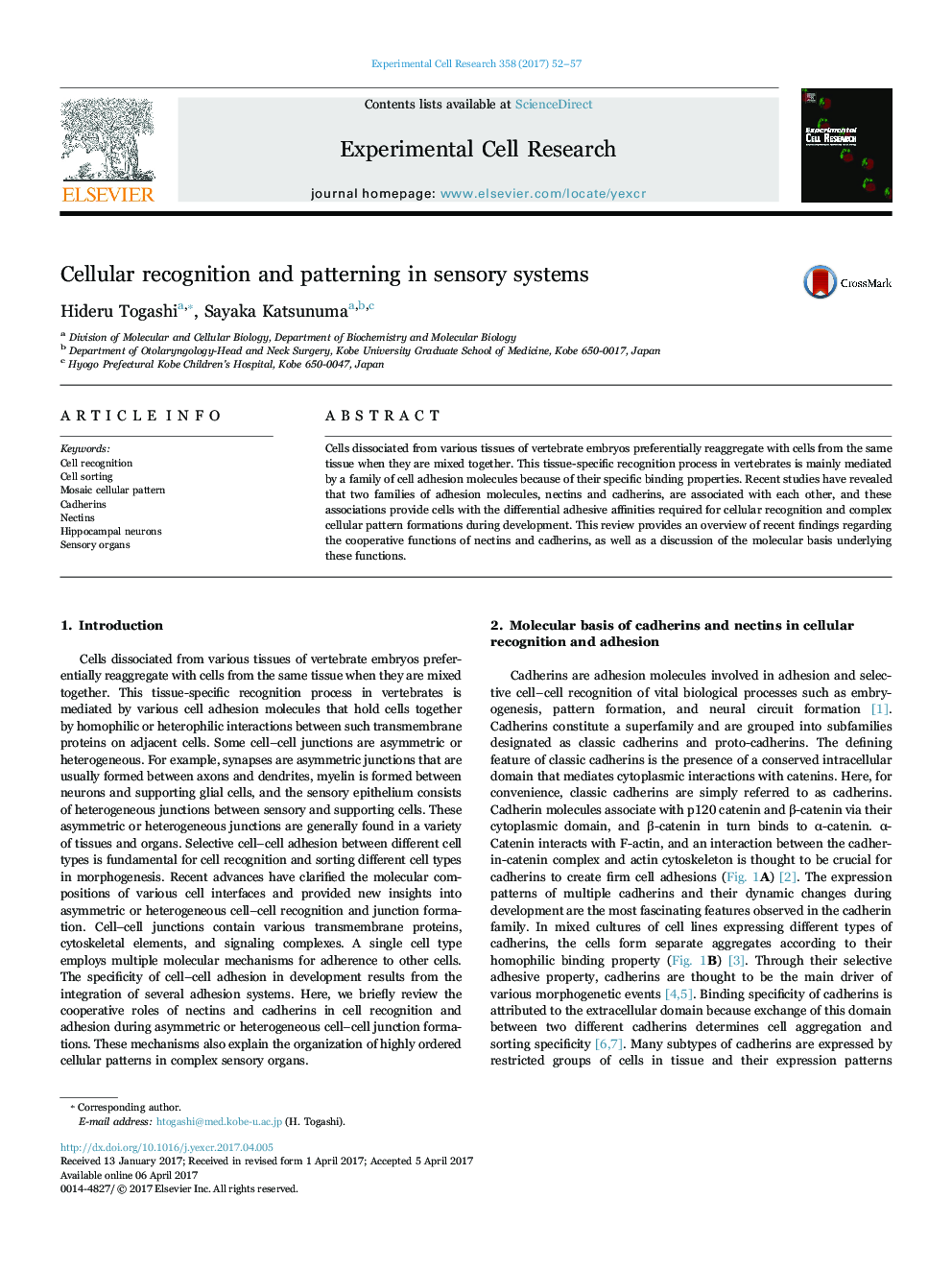| Article ID | Journal | Published Year | Pages | File Type |
|---|---|---|---|---|
| 5526869 | Experimental Cell Research | 2017 | 6 Pages |
â¢Differential adhesion is essential for cellular recognition and pattern formations.â¢Synergistic action of nectins and cadherins generates the mosaic cellular pattern.â¢Mosaic patterns of sensory epithelia are conserved among a wide range of species.â¢Physiological significance of cellular mosaics in sensory epithelia remains unknown.
Cells dissociated from various tissues of vertebrate embryos preferentially reaggregate with cells from the same tissue when they are mixed together. This tissue-specific recognition process in vertebrates is mainly mediated by a family of cell adhesion molecules because of their specific binding properties. Recent studies have revealed that two families of adhesion molecules, nectins and cadherins, are associated with each other, and these associations provide cells with the differential adhesive affinities required for cellular recognition and complex cellular pattern formations during development. This review provides an overview of recent findings regarding the cooperative functions of nectins and cadherins, as well as a discussion of the molecular basis underlying these functions.
